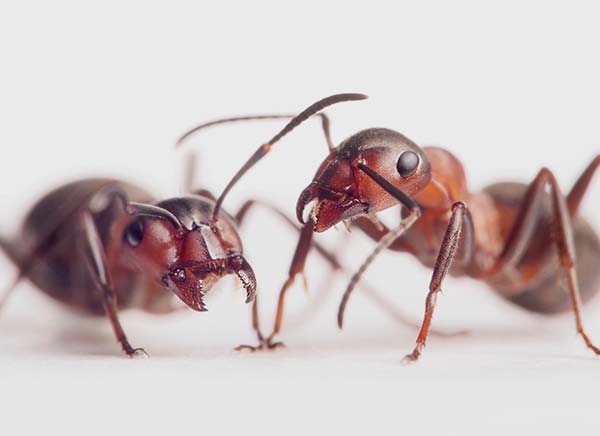Ants 101

Out of seemingly nowhere, a swarm of ants has invaded your kitchen. The countertops, stove, and sink all appear to vibrate as thousands of these busy pests search for food and water. How on earth are you going to get rid of them, and more importantly, prevent them from invading in the future?
All About Ants
Outdoors, ants are beneficial to the ecosystem. They aerate the soil and eat other potential pests. If only they’d stay outside!
Ants we see indoors are just the beginning of the story. They are worker ants (sterile females) that gather food to take back to the nest. Ants, like bees, live in a colony with a queen. The workers travel between the food source and their nest, where thousands more ants and the queen live.
Sometimes you might see just one or two ants in your home. These are scouts, and once they’ve found a promising food source, they will bring back thousands of their friends.
Prevention Indoors
Ants are constantly searching for food and water. Various ant species like foods ranging from sugary foods and drinks, grease, meat, to decaying garbage. Use the following tips to prevent ants from moving indoors:
- Clean up food and drink spills immediately.
- Rinse containers before putting them in the trash or recycle bin.
- Store food in airtight containers, not cardboard boxes.
- Pick up pet food dishes after mealtime, or put water and food dishes in a second bowl, creating a moat that you fill with water. Ants can’t cross it.
- Use Bio Spot Active Care™ Home Spray to help prevent ants from infesting your home.
Prevention Outdoors
The following are some ways in which you can control ant populations outside your home:
- Relocate piles of wood and bricks away from the house. Although household ants don’t eat wood, they do nest in it. Wood nesting ants like carpenter ants, will form galleries inside damp structural wood reducing home value.
- Repair or seal roof leaks, cracks in stucco or siding and gaps around doors and windows. The goal is to avoid ant conducive conditions like damp structure wood that provides shelter for wood infesting ant colonies.
- Take extra care to seal cracks around openings like water pipes.
- Trim branches that touch the home. Reduce the potential ant food sources around the home, such as an accumulation of yard waste like fallen fruit under fruit trees.
- Use Bio Spot Active Care™ Yard & Garden Spray to proactively control ant populations outdoors.
Treatment
Follow the ant trails so that you can identify where ants are getting into your house and the location of the ant colony. It’s important to treat the entry points and the colony for total ant elimination. If only entry points and trails are treated only the workers are killed. The queen ant is always producing more workers and within a short time workers will once again find a way into your home if the colony is not eliminated. .
The queen can live years, continually laying eggs and sending out new generations of workers. Outdoors, you may find the colony in a pile of mulch, under a woodpile, in a mound of dirt, in cracks near foundations or sidewalls. Although most nests are found outdoors, ants may also nest in walls and beneath floors.
To kill ants indoors, apply a product like Bio Spot Active Care™ Home Spray, Indoor Fogger, or Carpet Spray. Outdoors, apply Bio Spot Active Care™ Yard & Garden Spray.
Bio Spot Active Care is a trademark of Farnam Companies, Inc.